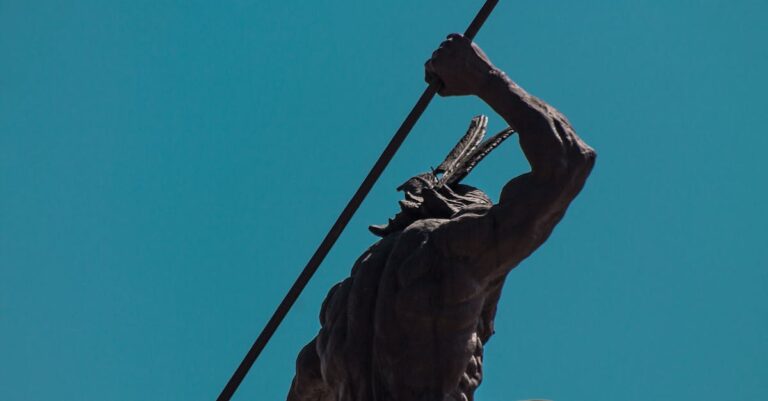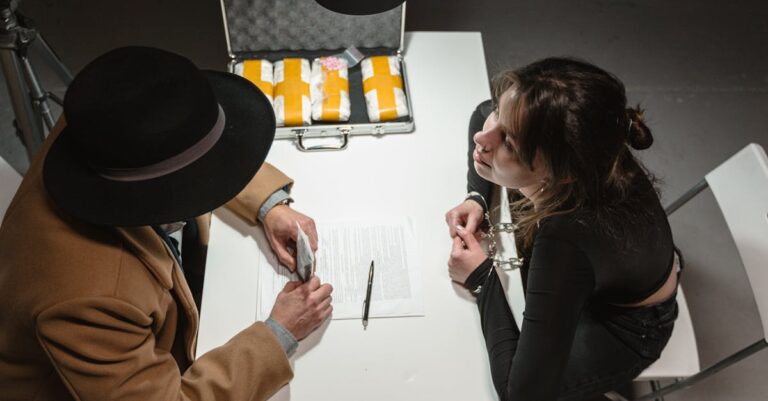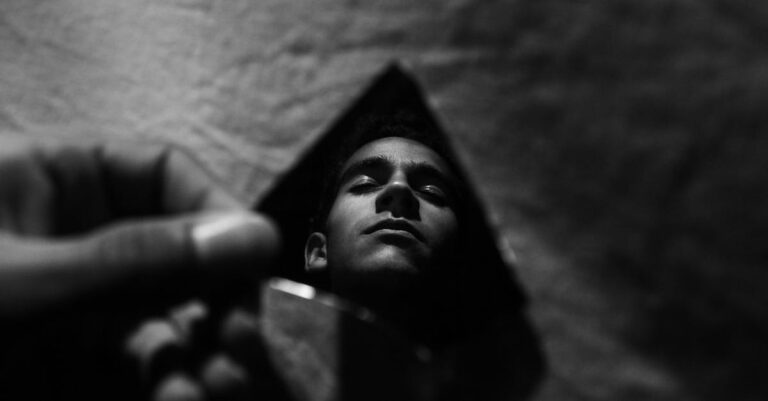
## The Static Bloom
The chipped porcelain felt cold against Leo Maxwell’s thumb. Not the teacup itself, though that was cool enough in the dim antique shop light, but the tiny mechanism nestled within its base. A lockpick – not brass and steel like his grandfather used to favor, but something…finer. Something that hummed with a low, insistent energy.
Old Man Tiber, the shop owner, watched him with eyes like faded photographs. “Belonged to your great-aunt Clara,” he rasped, polishing a tarnished silver locket. “Said it was ‘more than keys.’ Reckoned it talked to things.”
Leo snorted, a dry sound. Talking locks were Clara’s specialty. The family trade wasn’t just about bypassing tumblers; it was about understanding them, coaxing secrets from metal and wood. Lately, though, the trade felt more like a ghost story. His father had walked away from it all, becoming an accountant in Boise. Leo himself preferred coding, the clean logic of digital systems. This…this felt archaic.
“Father said she was obsessed with ‘pattern recognition.’ Something about art.”
Tiber’s gaze sharpened. “Clara saw things others missed. Hidden currents. She believed the city held its breath, waiting to be unlocked.”
The pick pulsed again. Leo slipped it into the lock of a small, ornate music box sitting on the counter. It didn’t click open. Instead, an image flickered onto the box’s lid – a section of a mural splashed across a brick wall in a neighborhood Leo barely knew. Coordinates scrolled beneath it, dissolving into symbols he didn’t recognize.
“What the hell…?”
“That,” Tiber said, his voice barely a whisper, “is where it begins.”
“Seriously? Graffiti?” Maya Sharma’s voice dripped with skepticism. She balanced a camera on her shoulder, the lens tracking Leo as he stared at the mural – a riot of color depicting stylized birds taking flight.
“Not just graffiti,” Leo countered, scrolling through the images now appearing on his phone’s screen. The pick, synced to a custom app he’d cobbled together during the drive from his apartment, was feeding him clues. “It’s…encoded. Based on some kind of augmented reality layer.”
Maya, a freelance journalist with an eye for the unusual, had answered his ad – ‘Coder needed. Strange family heirloom involved.’ He hadn’t expected her to be *this* pragmatic.
“AR scavenger hunt?” she suggested, adjusting the focus on her camera. “Some artist trying to go viral during the Heritage Festival?”
“It’s more complex than that. See these birds? Their wing patterns correspond to architectural details around the city. And…these symbols match geological survey markers.”
He tapped a symbol on his screen. The app projected an overlay onto the mural, highlighting specific points in the cityscape – a rooftop antenna, a drainage pipe, a forgotten statue.
“Okay,” Maya conceded slowly, her skepticism wavering. “That’s…weirdly specific.”
“I think Great-Aunt Clara left us a treasure map. A digital one, hidden in plain sight.”
The first location led them to the abandoned Blackwood Conservatory. Dust motes danced in the shafts of sunlight slanting through broken panes. The air smelled of decay and forgotten blooms.
“She used to come here,” Leo murmured, running a hand along the crumbling stone wall. “Said the acoustics were perfect for ‘listening to the city’s heartbeat.’”
Inside, another mural – this one depicting a network of roots spreading beneath the city streets. The pick pulsed violently as Leo approached, projecting an intricate 3D model onto the wall – a schematic of underground tunnels and hidden chambers.
“What is this place?” Maya breathed, circling the projection. “Some kind of secret bunker?”
A low humming filled the air, emanating from a sealed metal door hidden behind a tangle of vines. Leo touched the pick to the lock. The door swung inward, revealing a darkened chamber filled with antiquated machinery and blinking lights.
“Not a bunker,” Leo said, his voice tight. “A control room.”
The chamber reeked of ozone and forgotten power. Console screens displayed a complex network of environmental sensors – temperature readings, air quality levels, water flow rates. The data was decades old, but the system – incredibly – seemed operational.
“Eco-regulation?” Maya traced a finger across a diagram depicting a network of thermal vents and purification systems. “Like, managing the city’s climate?”
“Yeah,” Leo said, his eyes scanning the console. “But it’s bigger than that. These readings…they’re not just for the city. They’re for the entire region.”
He found a log file, dated twenty years earlier. The entry spoke of “Project Nightingale” – a covert operation designed to manage the environmental impact of rapid industrialization. The system had been shut down, deemed “too risky,” “too visible.”
“Someone didn’t want anyone knowing about this,” Maya said, her voice grim.
A flicker on one of the screens caught Leo’s attention. A live feed from a remote sensor array positioned atop Mount Rainier – the region’s largest volcano. The readings were spiking, indicating a significant increase in geothermal activity.
“That’s not good,” Leo muttered, zooming in on the data. “Mount Rainier is showing signs of instability.”
The next clue led them to the Kinetic Sculpture Park, a sprawling outdoor exhibit at the heart of the Heritage Festival. Interactive artworks dotted the landscape – wind-powered chimes, solar-activated fountains, gravity-defying mobiles.
“Great-Aunt Clara loved kinetic art,” Leo said, navigating the crowds with Maya beside him. “Said it was ‘the city breathing.’”
The pick directed them to a massive sculpture constructed from salvaged metal and recycled plastic. The artwork resembled a giant, blossoming flower – its petals slowly unfolding in the breeze.
“This is it,” Leo said, touching the pick to a hidden panel on the sculpture’s base.
The flower shuddered, then began to spin faster and faster. A holographic projection materialized in mid-air – a complex network of pathways connecting the sculptures throughout the park.
“What is this?” Maya asked, shielding her eyes from the glare.
“A data relay,” Leo said, his fingers flying across his keyboard. “Clara encoded the remaining clues within the sculptures themselves. Interactive kinetic artwork allows for open blueprint dissemination.”
He realized that each sculpture contained a hidden sensor array – transmitting data back to a central server. The server held the key to reassembling Project Nightingale’s control system.
“Someone is trying to reactivate it,” Leo said, his voice low. “But why?”
A message flashed across the holographic display – a warning from an anonymous source: *“They are watching. Disseminate the blueprints. Wake up the city.”*
The final location led them to an abandoned subway tunnel beneath City Hall. The air hung thick with the smell of mildew and decay.
“This is where it ends,” Leo said, his hand trembling as he activated a hidden access panel.
The tunnel opened into a vast underground chamber – a control center even larger than the one at Blackwood Conservatory. Computer consoles blinked with activity, bathed in the eerie glow of fluorescent lights.
“This is incredible,” Maya breathed, circling the room. “They built a whole secret city down here.”
But something was wrong. The console screens displayed corrupted data – warnings flashing in red.
“Someone sabotaged the system,” Leo said, his fingers flying across the keyboard. “They’re trying to shut it down.”
Suddenly, a figure emerged from the shadows – a man in a dark suit, his face obscured by a fedora.
“You shouldn’t have come here,” the man said, his voice cold and detached. “Project Nightingale was a mistake. It threatened too much.”
“Who are you?” Leo demanded, his eyes scanning the room for an escape route.
“Let’s just say I represent those who prefer things to stay hidden,” the man said, raising a silenced pistol.
“This is about control,” Maya said, her voice steady despite the danger. “They don’t want people knowing about what they’ve done to the environment.”
The man fired. Leo ducked, scrambling behind a console. Maya reacted instantly, throwing herself in front of him, absorbing the bullet.
“Run!” she gasped, clutching her shoulder. “Disseminate the blueprints!”
Leo didn’t hesitate. He activated a remote override, triggering a city-wide broadcast of Project Nightingale’s schematics. The data flowed across every screen in the city – phones, computers, billboards, even public transit displays.
The man cursed, firing another shot. Leo scrambled for the exit, dodging bullets as he raced through the tunnel. He emerged into the city streets – a chaotic scene of flashing lights and panicked crowds.
The blueprints were out there now, accessible to anyone who wanted them. The city was waking up.
Hours later, Leo sat on a park bench overlooking the cityscape, staring at his phone. Maya was in stable condition at the hospital, her shoulder bandaged but her spirit unbroken. The news was buzzing with reports of a massive data leak – schematics for an unknown environmental control system.
He received a message from an anonymous source: *“You have done well. The resistance network is activated. We will rebuild.”*
He looked up at the cityscape – a sprawling landscape of steel and glass, shimmering in the twilight. The city was breathing again.
He touched the chipped porcelain teacup in his pocket – a silent tribute to Great-Aunt Clara, the lockpick who had unlocked more than just doors. The city’s heartbeat was strong now – a steady rhythm of hope and resilience. Leo Maxwell had found his purpose – protecting the secrets that needed to be shared, ensuring that the city’s voice would never be silenced. The static bloom had begun to blossom.


